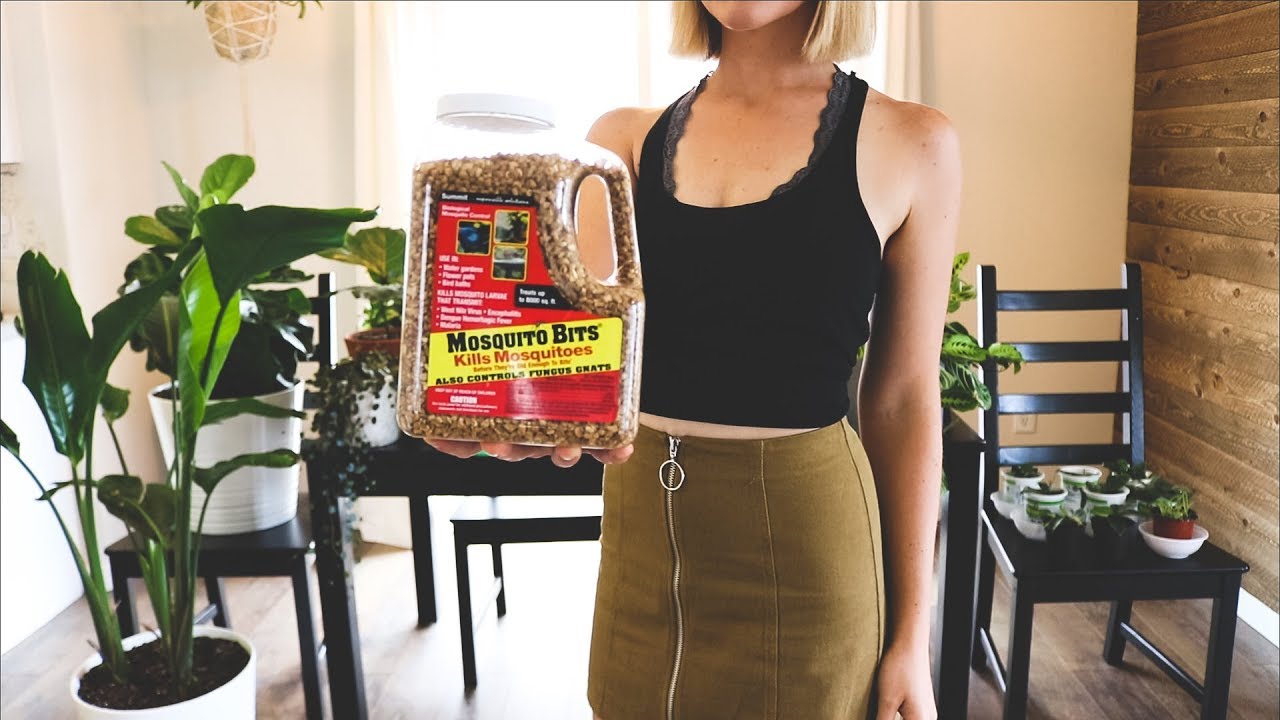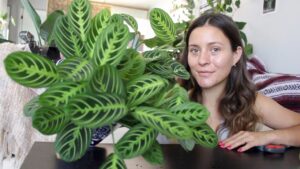There are several different methods of getting rid of gnats in house plants. These include using Diatomaceous earth, Hydrogen peroxide, Neem oil, or Neem pellets. The best solution for a particular plant will depend on its sensitivity level. Read on for some useful tips. If you are still struggling to get rid of gnats, try one of these natural remedies.
Diatomaceous earth
If you are dealing with fungus gnats, a natural treatment is Diatomaceous Earth. This powder is derived from mineralized fossil dust. Its abrasive properties make it an effective way to kill fungus gnats. Sprinkle the powder around the baseboards and stems of the plant. It is best to apply it on top of the soil, but it can also be spread on the plant’s stems. You can also place a small quantity of Diatomaceous Earth in cracks and holes.
While using this product to get rid of gnats in your house plants is an effective way to kill the pests, it is important to follow instructions carefully and avoid applying it near small children or pets. Diatomaceous earth will kill gnats and other pests in your plant, but be aware of diatomaceous earth’s harmful effects on beneficial insects.
For more effective results, diatomaceous earth is an excellent choice. It works as a pesticide by cutting through the outer layers of gnats. Diatomaceous earth is available in many garden stores and online. Simply sprinkle a small amount of it onto the soil of your houseplants, and repeat the process every couple of days. As long as you apply the diatomaceous earth frequently and thoroughly, you should be able to eliminate the gnat problem completely.
Neem oil
A common pesticide for fungus gnats is neem oil. It is an organic product that can be applied to the soil of houseplants, killing gnats at any stage of their development. Neem oil is an organic, nontoxic alternative to pyrethrin spray, which contains extracts that are toxic to many insects and will kill fungus gnats on contact. While fungus gnats can have a detrimental impact on houseplants, they do not carry any health risks to humans or pets.
Another option for controlling fungus gnats is neem oil, which can be applied as a drench to the soil. The yellow sticky traps you can use to trap adult gnats are effective at catching the insects, while watering plants with diluted neem oil is a natural way to kill larvae without harming the plants themselves.
If you decide to apply neem oil to the soil, make sure that you apply it on the plant’s leaves in a well-ventilated area. The mixture is most effective when applied directly to the pests, but it does need to be reapplied every few days. If you want to use the solution as a permanent solution, you should try it outside the house first, as the smell from neem oil can be quite strong.
Neem oil is a natural insecticide that is effective on most common household pests. However, it’s important to use the product correctly – neem oil does not kill insects on contact, but it does affect their hormones, making them less able to feed, grow, and reproduce. Neem oil is most effective against soft-bodied pests, like mealybugs, aphids, whiteflies, and thrips.
Hydrogen peroxide
If you’re wondering how to get rid of gnats in your house plants, it’s easy. Hydrogen peroxide drench is an effective solution. Dilute it to a ratio of one part hydrogen peroxide to three parts water, and spray the plant’s soil and leaves. This mixture will kill the adult gnats as well as their larvae, and it’s completely safe for your house plants. You can also use Gnat Stix, yellow sticky traps that you place on your plants’ leaves and stems. These traps will catch adult gnats and reduce the number of eggs.
You can purchase hydrogen peroxide in spray bottles at most convenience stores, pharmacies, and grocery stores. You can also get hydrogen peroxide in natural forms, produced by sunlight reacting with water and other processes that occur in animals and plants. Just make sure you use a product that is 3% or higher in concentration. Hydrogen peroxide is safe for pets, plants, and people, making it an affordable, effective solution for controlling gnats in your house plants.
To apply hydrogen peroxide to your house plants, you should mix one part of hydrogen peroxide with four parts of water. Shake the solution before applying it to your plant soil. Hydrogen peroxide will foam when it comes into contact with the growing medium. The larvae and adult gnats will be killed by the contact with the hydrogen peroxide, which will eventually break down into oxygen and water molecules.
Neem pellets
If you’re looking for a natural way to get rid of gnats from your house plants, you’ve probably considered using neem pellets or spray. Essentially, these products work by mimicking the chemical structure of hormones in other invertebrates and microbes. These compounds are absorbed into the insects’ bodies as hormones, causing physiological and behavioral aberrations. Because they’re biodegradable, you can use them on houseplants as well.
Besides using Neem pellets or sprays to kill gnats on houseplants, you can also make a solution of one part neem oil to three parts water and spray it directly onto the gnats’ eggs. This will prevent gnats from returning. You should also replace the soil with indoor soil that is well-drained.
While these products are organic and free of chemicals, they still have their place in the pest control arsenal. Unlike pesticides, neem pellets are safe to use on any house plant, and they can be applied directly to any surface. Neem oil, which comes from the seeds of the neem tree, is a very effective insecticide that kills gnat larvae and adults.
Leaf Miner infestations are hard to get rid of, but repeated sprays of Bonide(r) Neem oil are effective. Using Bonide(r) Neem oil on your houseplants will also kill the larvae, but make sure to repeat the spray every 10 days to ensure complete control. This product can be used on houseplants and edibles.
Neem oil soil drench
One of the most effective methods for eliminating fungus gnats in house plants is to use neem oil. You can either make your own soil drench or use a diluted solution of neem oil. Dilute it according to the manufacturer’s instructions and apply it to your plants. This solution will kill larvae and adult gnats on contact. Neem oil can also be used to water your plants with, although this won’t harm the plants.
If you don’t want to buy expensive neem oil, you can make your own solution. You can mix a tablespoon of neem oil with one cup of water. Then, stir the mixture well. Apply it on the roots and leaves of the plants. Don’t forget to apply it around the base of shrubs and trees.
You can also buy Steinernema nematodes, which can be expensive and are shipped live. However, they are sensitive to very dry weather and humidity conditions. Therefore, you might end up getting dead ones if you don’t purchase a cold pack or buy the product online. Neem oil products are expensive and must be repeated to build a sufficient population.
You can also use sticky traps in your pots to catch newly emerged adults. Disturbing your pots can help catch them. A circulating fan will also help. While these methods won’t get rid of the gnat problem entirely, they can help a lot. They won’t completely eliminate them but will reduce their numbers. This way, you can continue to enjoy your houseplants without the threat of a gnat infestation.
Mosquito bits
To treat your plants for fungus gnat infestations, you can use a product called Bti. These products are derived from a naturally occurring bacterium that can kill mosquitoes, black flies, and fungus gnat larvae. These can be found in the soil. To treat your house plants for fungus gnat infestations, you can mix the Bti product with the water used to water the plants. It will kill the fungus gnat larvae and adults, but it will take some time before you see results.
Another effective method for killing fungus gnats and mosquitoes is to use insecticides like Mosquito Bits. These products contain a granule of BTI, which is a natural bacteria known to kill the larvae of mosquitoes and fungus gnats. The good thing about these products is that they are safe for people and pets, as long as the granules do not kill the plant.
Mosquito Bits can be sprinkled on the soil of infested plants. The product is highly effective, as it releases a biological mosquito larvicide (BTI) beneath the soil surface. Mosquito Bits should be used in several applications. The active ingredient in Mosquito Bits kills larvae, eggs, and their pupae. The product needs to be applied three times before the adult fungus gnats are able to lay their eggs in the plant.



